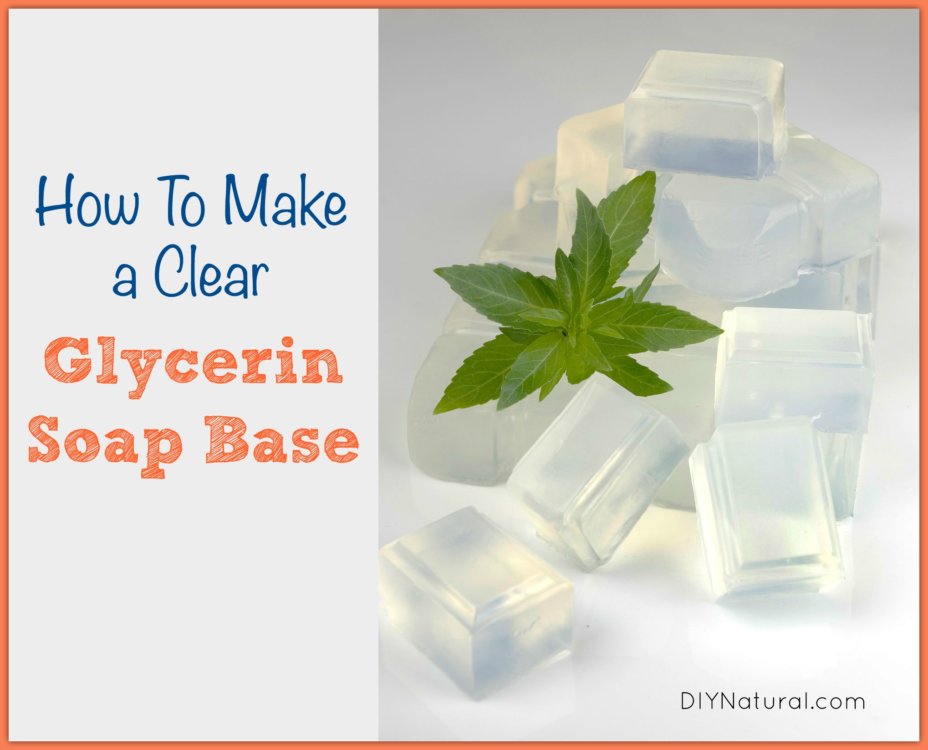
Learn how to make a glycerin soap base recipe. It’s a moldable base purged of all lye and oils that you can make into many shapes and colors.
By now most of you know I’m a soap maker. I have a small business that makes more than 400 bars a month and it’s still growing. I sell a lot of soap at the tailgate markets in the summer and I always have people asking for a glycerin soap base. It’s still a common myth that glycerin soap is milder and better for you. That can be true in some cases, but when you hand-craft a good cold process bar of soap, it contains just about as much glycerin.
Let’s take a look at how to make glycerin and then explore my favorite, recipe for how to make a glycerin soap base.
How Glycerin is Made
Glycerin is a by-product of soap making. It can come from other sources, but soap making is by far the most common source. When you combine lye and water with oils, it saponifies and becomes soap. (Check out our tutorial on making cold process soap.) Actually, the end product is ⅔ soap and ⅓ glycerin. The glycerin is then usually taken out and sold to other companies such as fertilizer and explosives manufacturers. If you refine the solid soap, add sugar and alcohol, and skim off the impurities, you get a glycerin soap base. Let’s take a look at the entire process.
Glycerin soap is used by people with sensitive, easily irritated skin because it prevents skin dryness with its moisturizing properties. It draws moisture up through skin layers and slows or prevents excessive drying and evaporation.[1]

How to Make Glycerin Soap Base
Learn how to make a glycerin soap base recipe. It's a moldable base purged of all lye and oils that you can make into many shapes and colors.
- Prep Time
- 30 minutes
- Active Time
- 1 hour
- Cooking Time
- 4 hours
- Total Time
- 5 hours 30 minutes
- Servings
- 7 4 ounce bars
- Estimated Cost
- $5
Ingredients
- 14 oz vegetable oil (lard, tallow, or other oil)
- 5.5 oz coconut oil
- 8 oz castor oil
- 3/4 oz safflower oil (or sunflower oil)
- 4 oz lye (100% sodium hydroxide)
- 5 oz filtered water (or distilled)
Instructions
-
To begin making your glycerin soap base cover your work surface with newspaper. Always use gloves and safety goggles when handling lye. (Learn all about lye in soap making.) Have vinegar on hand in case lye spills or splashes occur.
-
Measure water into a heatproof container. Measure lye and slowly add to water, stirring until dissolved. (Never add water to lye.) Allow lye water to cool to 150°F.
-
Mix all of the oils together and heat to 135°F – it's easiest to use a slow cooker for this. Add the lye water to the oils in a slow steady stream.
-
Bring the mixture to a trace, or when it looks like vanilla pudding. An immersion blender works best for this.
-
Keep the heat at medium for a few hours, much like making crockpot soap. When the glycerin soap mixture reaches the gel phase, it will look translucent like petroleum jelly. Stir once in a while, but not all the time. If it gets too thick, you can use a potato masher. I have a stainless steel one I use just for this.
Test the Soap Base
-
After a few hours, take a bit of the soap and try to dissolve it in a cup of hot water. If it dissolves, you can move on. If it stays in a lump or has oil floating on the top, you need to "cook" it more. Leave it for half an hour and try again. If it's ready, then add:
-
13 oz alcohol – 70% or higher (NOT rubbing alcohol)
-
3 oz liquid glycerin (find it here)
-
Be very careful as alcohol has a low flash point and can start on fire. This is why I prefer the crockpot to the stove for heating. You may need to mash the soap up some. Do a bit at first, then do more in a little while. If you mash too much at once, you may get a lot of suds. This process can take a few hours, so be patient.
-
When the soap is all dissolved, there will probably be a few particles floating on top. These are impurities and must be removed. Skim them off and throw them away, or you can place them in a jar, cover with hot water, and use for dish soap.
-
When the soap is fully dissolved combine 8 oz sugar and 5 oz water and boil until the sugar is completely dissolved. Do not leave any crystals undissolved. When it is totally liquid, pour into the soap base. Stir and cover, then cool to 145°F.
-
Now you can pour glycerin soap base into a mold. I use a glass cake pan. Cover with plastic wrap and let sit for a week or so. When it is clear (it may take a week or two) cut it into pieces and store it in a glass jar.
Recipe Video
Made this recipe?
Mention @diynatural or tag it #diynatural!
Using Your Glycerin Soap Base
Once you make this glycerin soap recipe you’ll see how fun it is to work with. All of the lye and oils have been worked out, leaving you with a very moldable base. It can be made into a wide array of shapes and colors.
- Prepare your molds. Set them on a flat surface and get your fragrances and colors ready.
- Figure out how much soap base you need. An average bar of soap is 4 ounces and the mold will tell you how many ounces it holds. Use a bit more as some will remain on the melting container and spoon.
- Place as much soap base as you need into a heatproof container to melt it. I use a pint jar. Place the jar in a pan of hot water to melt, stirring occasionally. When melted, take the jar out of the water and place it on a cloth. Add a few drops of food coloring if desired. Stir well. Add more if needed. Next, add the essential or fragrance oil a few drops at a time. A 4-ounce bar should have about 10 drops of scent. Add any dried herbs you may desire, about a teaspoon per 4-ounce bar.
- Now pour your glycerin soap into the molds. If the base cools too much and gets chunky or stiff, remelt it and stir. Let the molds sit until the soap is completely cool.
- When cool, remove from the mold. Wrap soap in plastic wrap or wax paper. You must wrap it right away or it may collect moisture from the air and bead “sweat” on the surface.
- Clean-up is easy. (After all, it’s just soap you’re cleaning off your supplies.) Just soak the molds in hot water, rinse and dry well.
A Few Notes on Making Glycerin Soap
- 70% alcohol may be hard to find. Don’t use rubbing alcohol, you will never get rid of the smell! I use a 75% Everclear which is available in most areas. If not, ask at your local liquor store. They can recommend what may work. Keep it clear and unscented.
- Alcohol can catch easily, so be cautious!
- Silicone molds work well because they peel off the soap easily.
- These instructions are for clear soap. Add some titanium dioxide or zinc oxide powder to get a white soap that will produce pastels when colored. (Find titanium dioxide here or zinc oxide powder here.)
- Keep herbs ground well and always use dried herbs.
- White sugar produces the best results. You can use raw sugar but your soap will have more amber color.
Do you know how to make a glycerin soap base? How did your batch turn out?
*******
Sources
- Glycerol. Wikipedia. Accessed Jan 2020.
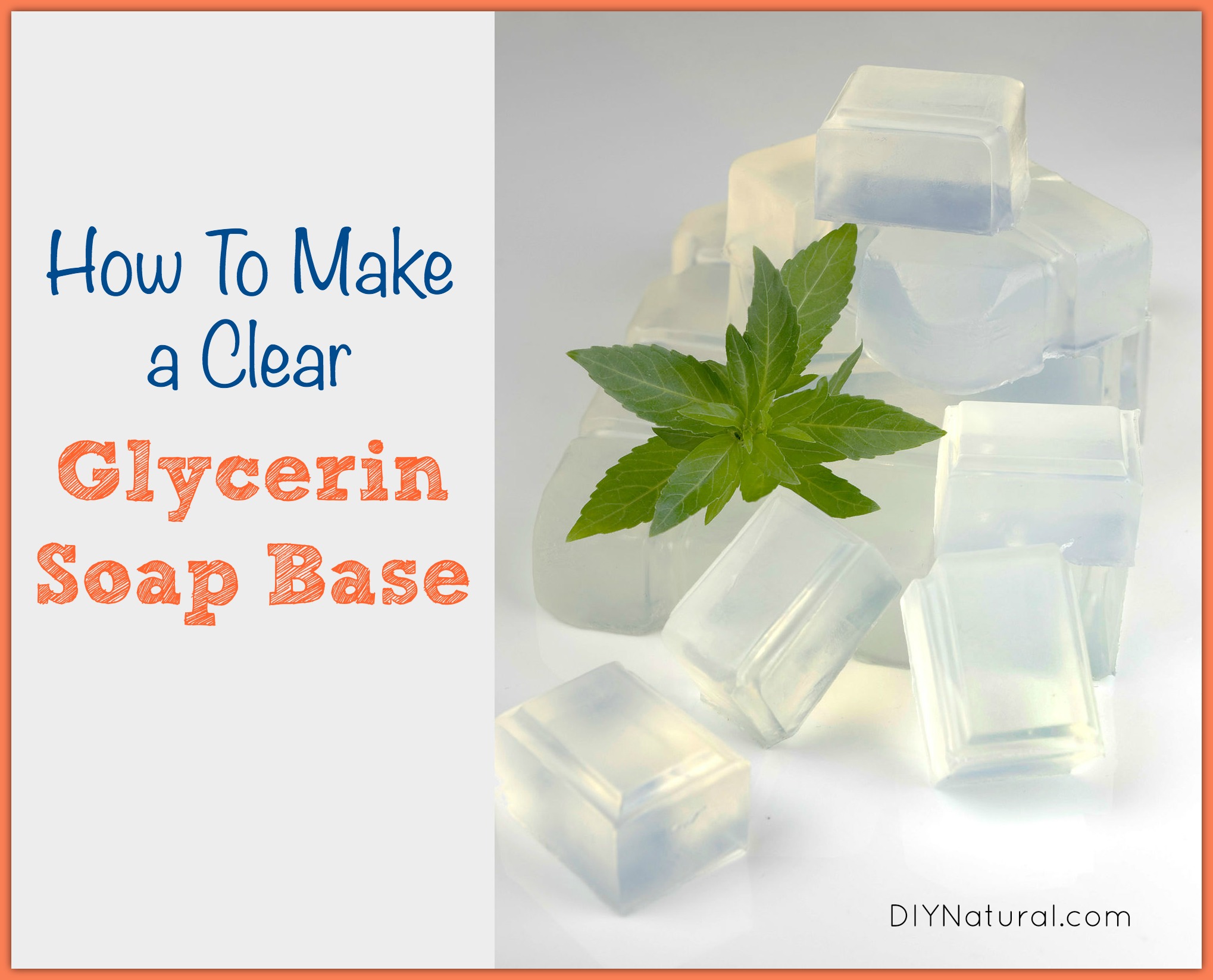
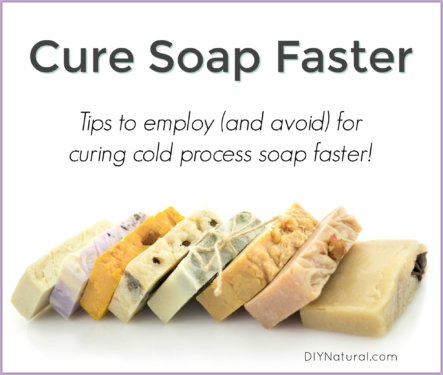
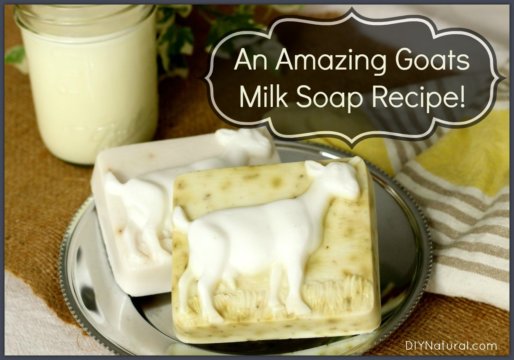
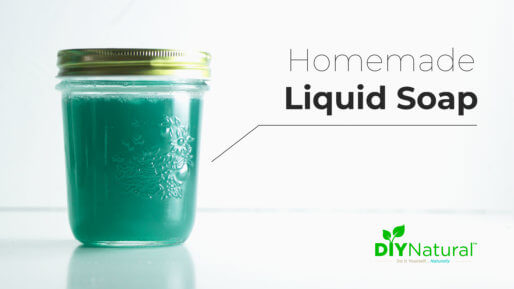
What i do not understood is actually how you’re not actually much more well-liked than you might be right now. You are so intelligent. You realize therefore considerably relating to this subject, produced me personally consider it from numerous varied angles. Its like women and men aren’t fascinated unless it抯 one thing to do with Lady gaga! Your own stuffs great. Always maintain it up!
This looks like it would be fun to make for letting my children dabble in making fun shaped and colored soaps after it’s ready.
I am curious, why the sugar? I am sure that it is necessary, but I am curious as to why, and what it adds to the process.
I love to know the “why” on things. It just seems to make it more fun for me.
Thank you Debra Maslowski for your well written article; I enjoyed it much.
I have been experimenting with a purchased aloe soap base 50 grams at a time and various ratios of vegetable glycerin, sugar, various alcohols and rum 151 (I don’t have much resources nearby). It’s been fun and so far I got rid of deep cloudiness, but there’s still tiny little bubbles that I want to get rid of. I will have a problem if I need other alcohol. Should I ratio more alcohol for these tiny bubbles? What do you suggest for my 50 gram ratios? (This amount fits exactly into one plastic rose in a mold set I have.)
very best thank you
How many 4 oz bars does this batch yield?
Approximately 7.
Debra,
Just curious how this soap does with sensitive skin? With the alcohol in it?
Definitely planning on making this!
Thanks
I am just venturing into soap making. I must admit using the lye is a bit daunting. I think finding the place to do this is my first job. If I wanted to use Jojoba oil, would I use it instead of the coconut oil or safflower? And sorry if I missed this in your blog, what is SAP? thanks!
Hi Giselle, The SAP value is that amount of lye that it takes to make a certain oil into soap. Actually, there’s more to it than that, but this is the condensed version. Most oils used in cooking fall within a range of .189 to .199, and can be used interchangeably. Some oils have a higher SAP, such as coconut oil, meaning that it takes more lye to make them into soap and some, like jojoba, have a much lower rate. So I wouldn’t substitute jojoba in this case, unless you do a recalculation on it and find out exactly how much lye you need. But…you can use jojoba oil as an additive for more moisturizing quality. For these recipes, I’d use 2 tablespoons of excess oil, but not much more. Too much, and there isn’t enough lye to react with the oil, so your soap has a higher chance of becoming rancid. Hope this helps!
Can you use vodka for the alcohol part and also the temperatures are they in Fahrenheit or Celsius, as in Australia we use Celsius. I have been looking for a recipe like this, Can
You can use vodka, Simone, if you can find one that is 50% or higher. You want to get as close to 70% as you can. The temperatures I used were in Fahrenheit. There are many sites on the internet that have conversion charts. I have to use them since i can’t do it in my head. Thanks for letting me know that some people use Celsius, since I never thought about it. I’ll be posting both in the future just to make it easier on everyone.
Just confused about alcohol. Is it isopropyl alcohol or denatured? Wasn’t sure what to use. Thanks.
I use Everclear, Kathy, which is a grain alcohol. I steer clear of isopropyl, you may never get the smell out of your soap. It tends to linger for a long time. Denatured alcohol is mostly ethanol, the same alcohol that is in Everclear, but there are additives, one of them being isopropyl. I’d go for Everclear if you can get it or a higher proof vodka. If you can get it in your area, moonshine is legal (here in North Carolina anyway) and goes upwards of 50% alcohol. It may take longer to get your soap to clear with lower proof alcohols, but it will still work.
Can I use coconut oil , avocado oil or argon oil instead of sunflower oil to make glycerin soap base?
You can make substitutes, Laila, but remember to stay within the same SAP range. There is already about 30% coconut oil, so I wouldn’t add more or that. And argan oil is very expensive, but can make a great soap. The SAP of that is .191, well within the range. Avocado oil too, can be used, but may be costly.